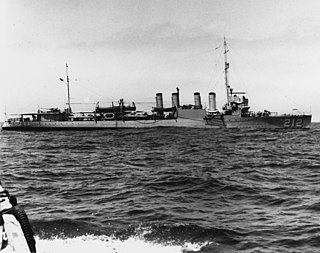
Richard Wigginton Thompson was an American politician.

USS Thompson (DD-305), a Clemson-class destroyer of the U.S. Navy named in honor of Secretary of the Navy Richard W. Thompson (1809–1900), never saw action against an enemy. She was the first Navy ship of that name; the second, Thompson (DD-627), named for Robert M. Thompson, served during World War II and the Korean War.

The Boston Navy Yard, originally called the Charlestown Navy Yard and later Boston Naval Shipyard, was one of the oldest shipbuilding facilities in the United States Navy. It was established in 1801 as part of the recent establishment of the new U.S. Department of the Navy in 1798. After 175 years of military service, it was decommissioned as a naval installation on 1 July 1974.

Bath Iron Works (BIW) is a major United States shipyard located on the Kennebec River in Bath, Maine, founded in 1884 as Bath Iron Works, Limited. BIW has built private, commercial, and military vessels, most of which have been ordered by the United States Navy. The shipyard has built and sometimes designed battleships, frigates, cruisers, and destroyers, including the Arleigh Burke class which are currently among the world's most advanced surface warships.
A destroyer squadron is a naval squadron or flotilla usually consisting of destroyers rather than other types of vessel. In some navies other vessels, such as frigates, may be included. In English the word "squadron" tends to be used for larger and "flotilla" for smaller vessels; both may be used for destroyer units. Similar formations are used in non-English-speaking countries, e.g., the "escadrille"—which would translate directly as "squadron"—in France.
USS Porter may refer to one of several ships in the United States Navy named in honor of Commodore David Porter, and his son, Admiral David Dixon Porter.
USS Henley has been the name of three ships in the United States Navy named for Robert Henley. A fourth ship was named for his brother, John D. Henley.

United States Fleet Activities Yokosuka or Commander Fleet Activities Yokosuka is a United States Navy base in Yokosuka, Japan. Its mission is to maintain and operate base facilities for the logistic, recreational, administrative support and service of the U.S. Naval Forces Japan, Seventh Fleet and other operating forces assigned in the Western Pacific. CFAY is the largest strategically important U.S. naval installation in the western Pacific.

USS Smith Thompson (DD-212) was a Clemson-class destroyer in service with the United States Navy from 1919 to 1936. She was intentionally sunk following a collision with USS Whipple (DD-217), in July 1936.

USS Barker (DD-213) was a Clemson-class destroyer in the United States Navy in World War II, named for Admiral Albert S. Barker.

The Benson class was a class of destroyers of the U.S. Navy built 1939–1943. The thirty 1,620-ton Benson-class destroyers were built in two groups. The first six were authorized in fiscal year 1938 (FY38) and laid down at Bethlehem Steel, Quincy, Massachusetts and three naval shipyards. The remaining 24 “repeat Bensons” were authorized in 1940–42 and built at four Bethlehem Steel yards. They were laid down after the first group was commissioned. These plus the “repeat Livermores” were also known at the time as the Bristol class. During World War II the Bensons were usually combined with the Livermores as the Benson-Livermore class; this persisted in references until at least the 1960s. In some references both classes are combined and called the Benson class. The Benson- and Gleaves-class destroyers were the backbone of the pre-war Neutrality Patrols and brought the action to the enemy by participating in every major campaign of the war.

Charles Turner Joy was an admiral of the United States Navy during World War II and the Korean War. During the last years of his career, he served as Superintendent of the Naval Academy. The destroyer USS Turner Joy (DD-951) was named for him.

The Gleaves-class destroyers were a class of 66 destroyers of the United States Navy built 1938–42, designed by Gibbs & Cox. The first ship of the class was USS Gleaves. They were the production destroyer of the US Navy when it entered World War II.

USS Corry (DD-334) was a United States Navy Clemson-class destroyer launched and commissioned in 1921.

The Federal Shipbuilding and Drydock Company was a United States shipyard, active from 1917 to 1948. It was founded during World War I to build ships for the United States Shipping Board. During World War II, it built ships as part of the U.S. Government's Emergency Shipbuilding program. Operated by a subsidiary of the United States Steel Corporation, the shipyard was located at Kearny Point where the mouth of the Hackensack River meets Newark Bay in the Port of New York and New Jersey. The shipyard site is now part of River Terminal, a massive distribution facility that is partially a foreign trade zone.
USS Woodrow R. Thompson has been the name of more than one United States Navy ship, and may refer to:
Woodrow R. Thompson (1919–1942) was a United States Marine Corps sergeant who received a posthumous Navy Cross for his actions in the Guadalcanal campaign during World War II.
This page is based on this
Wikipedia article Text is available under the
CC BY-SA 4.0 license; additional terms may apply.
Images, videos and audio are available under their respective licenses.











